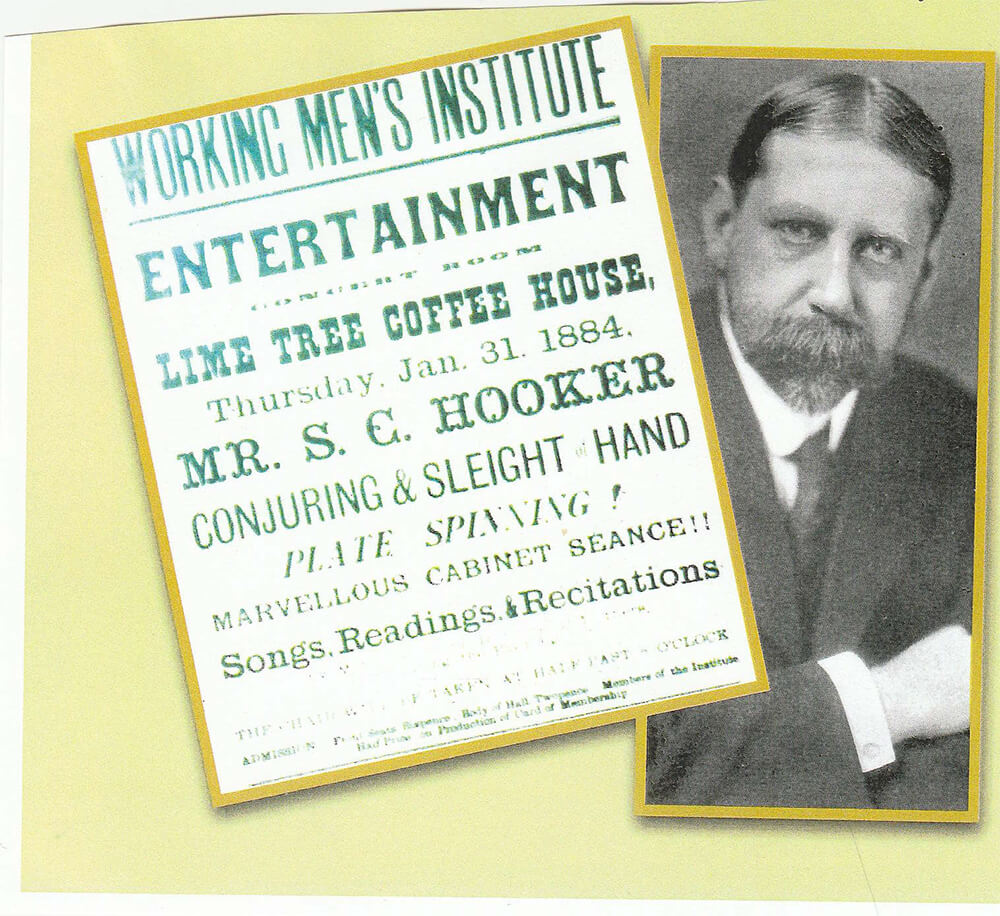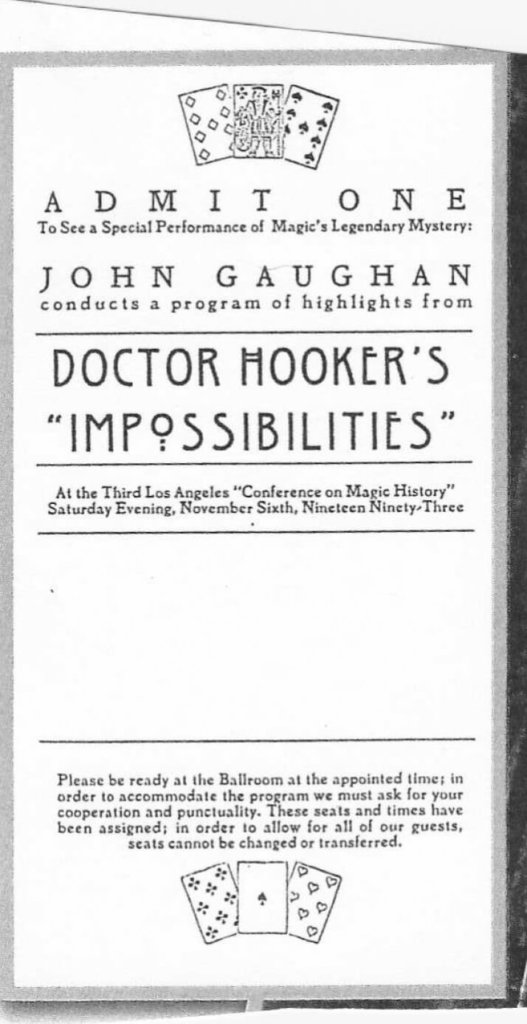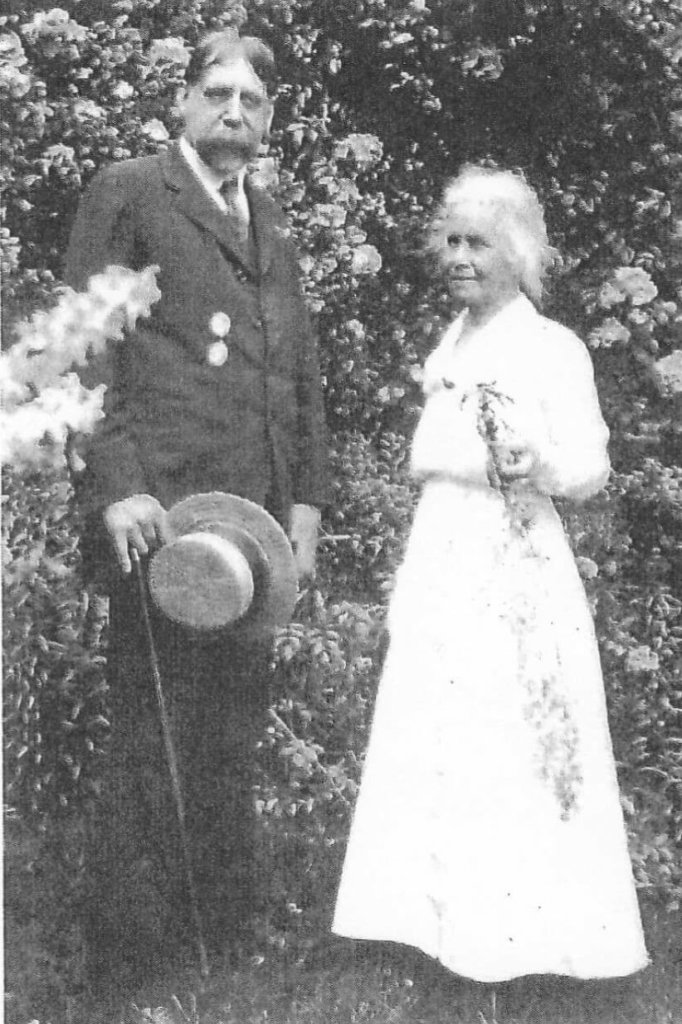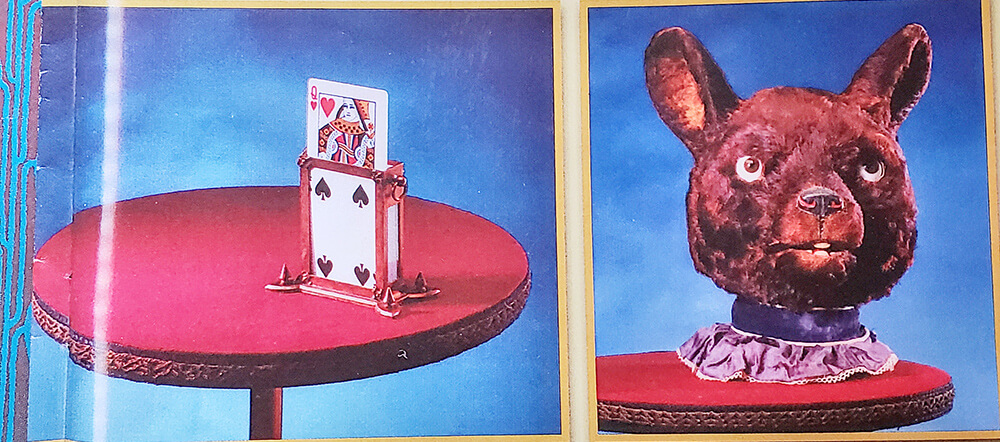Science, magic and an English grandfather – Part 1 & 2
 My Grandfather Hooker loomed like a giant at 6 feet 6 inches tall with size 15 black shoes that laced to the ankles. Even his walrus mustache and beard seemed unusual, accompanied by his commanding manner. He was born in Brenchley, Kent, England, in 1864 and hoped to become a professional magician. A frayed poster announced his performance at age 16 in a local establishment called the Lime Tree Coffee House.
My Grandfather Hooker loomed like a giant at 6 feet 6 inches tall with size 15 black shoes that laced to the ankles. Even his walrus mustache and beard seemed unusual, accompanied by his commanding manner. He was born in Brenchley, Kent, England, in 1864 and hoped to become a professional magician. A frayed poster announced his performance at age 16 in a local establishment called the Lime Tree Coffee House.
He excelled in chemistry, and his father, an architect, urged him to get a scientific education. Starting at the Government Science School in London, he continued his chemical studies at a prestigious institution in Munich, Germany, and earned his Ph.D. in two years.
My grandmother from Ohio took a trans-Atlantic boat to London to earn her Ph.D. in 1884. Her application read identified her as MA Owens, as she realized she would not be admitted to the University of London if they knew she was a female.
As Grandfather pursued his postdoctoral work in London he soon met Mary Alice Owens. One evening the night watchman came in to check the lab, and both were peering through a microscope. Dressed in her long dress and blouse he towered over her 5 feet 2 inches—and had his arm around her waist.
He became smitten with this feisty young woman and proposed.
 She agreed to marry him if he came to the U.S. where jobs were more plentiful. He first worked with the American Sugar Company, where Harry Havemeyer, its president, took him under his wing as a son. Grandfather successfully removed the impurities in the sugar, making it white. In sugar circles he became known as the father of the American beet industry. He also was a successful businessman and retired when he was 51 years old.
She agreed to marry him if he came to the U.S. where jobs were more plentiful. He first worked with the American Sugar Company, where Harry Havemeyer, its president, took him under his wing as a son. Grandfather successfully removed the impurities in the sugar, making it white. In sugar circles he became known as the father of the American beet industry. He also was a successful businessman and retired when he was 51 years old.
He and Grandmother moved to Brooklyn Heights in 1913, settling into 82 Remsen Street, a handsome double-width brownstone built about 1840 with a garden in back and adjacent carriage house. After their deaths this became my family home for the following 30 years.
Grandfather renovated the latter to accommodate his well-equipped chemistry laboratory. He also raised all the slate counters six inches higher because of his height.
The bookcases on the second floor eventually held 21,000 volumes of periodicals and books. It was later deemed one of the most complete chemical libraries in the world. In addition, he had a respectable magic library.
Grandfather was a member of the prestigious Society of American Magicians, which convened a few times a year in members’ homes. He had invited 25 guests to show them his newest tricks. My older sister, Kitty, and two colleagues would participate as helpers in the performance. They were sworn to secrecy.
My younger sister, Louise, and I (age 5 years) wore brand–new, blue-striped taffeta dresses with wide sashes at our waists.
Grandfather knew it would be a unique evening for us. As it turned out, this performance for his peers was one of his last.
The doorbell rang and the butler greeted the enthusiastic guests. They were dressed in overcoats, top hats and tuxedos. Louise and I quickly noticed all of the men had long agile fingers and tricks up their sleeves.

They moved gracefully, standing poised as if on stage, and talked in clear, articulate voices. Each held something in his hand, such as a deck of cards, while suggesting someone stand opposite. “Pick one.” Another magician was throwing rubber balls in the air, then squeezing three into one ear and taking five out of the opposite ear. “Look over there,” Louise said, as we watched a magician stuff three silk handkerchiefs up his right sleeve and pull out a series of multi-colored ones from the left sleeve.
Louise and I squealed in unison as one handsome magician reached down to pull a stack of dimes from our sashes. Then a short stout magician lifted his top hat from under his arm and pulled out a live rabbit. We patted its silky fur until it disappeared. Everything seemed to move quickly, as several magicians demonstrated their newest slight-of-hand.
John Mulholland was among the guests; he was becoming well-known as a professional magician who lectured, wrote books and performed all over the world.
Houdini, considered the most innovative in the group, was also present. In London an assistant would tie him up in ropes and chains, even using locks or handcuffs. A few members of the audience would go up to test them. Then he was lowered into the water and tried to escape.
Louise and I noticed the deference the group showed Grandfather. There was much good will, laughter and anticipation. Tonight Grandfather’s performance would be “Impossibilities and Miltiades,” the talk of the magic community that was fueling endless speculation.
Next there was dinner and then the long anticipated magic performance.
Part 2 – l934
Grandfather Hooker had invited 25 members from the American Society of Magicians to 82 Remsen Street to attend his newest performance of Impossibilities and Miltiades, which no one had been able to solve.
As the magicians arrived in formal dress they enjoyed pulling silk scarves out of their ears and performing other legerdemains. Even a rabbit appeared under a top hat and quickly disappeared in a blink. Then they chose their dinner from the elegant buffet in the dining room. Finally, after demitasses, chocolates and liqueurs, the group filed into the conservatory, down the iron steps through the garden and into the carriage house. They proceeded to the second floor into the small theater that Grandfather had built for such occasions.
 Rows of folding chairs faced four small pedestal tables with round tops, and behind this were maroon velvet curtains. The “stage” was brightly lit by hanging electric lights. The front row, only six feet from the tables, filled rapidly; the closer the magicians sat, the more they might surmise how the tricks were done.
Rows of folding chairs faced four small pedestal tables with round tops, and behind this were maroon velvet curtains. The “stage” was brightly lit by hanging electric lights. The front row, only six feet from the tables, filled rapidly; the closer the magicians sat, the more they might surmise how the tricks were done.
One of the rules was if anyone got up during the show, the performance would be brought to a halt.
Grandfather had bought a handsome stuffed bear, used at Wanamaker’s as a Christmas display. His hair was all matted from children patting him. Grandfather unceremoniously cut off his head and replaced the button eyes with glass ones, which gave the bear a lifelike appearance. He rolled his eyes and wagged his jaw as if talking. Grandfather named him Miltiades after an Athenian general.
One of the four tables that made up the stage held Miltiades; on the others were a large glass bell jar and some equipment.
Grandfather welcomed the audience. A deck of cards was divided into a number of piles and given to different spectators to be shuffled. Grandfather brought the houlette (a tall bell jar) to the audience for close inspection before it was replaced on the table. The cards were then returned and put in the houlette.
He then called upon the Queen of Hearts to greet the audience. The card rose and curtsied (by bobbing up and down) and danced (more bobbing) as the music box played offstage. Then the Queen was gently placed on the edge of the table to serve as mistress of ceremonies.
Grandfather now summoned the King of Spades, and this card rose from the deck. Soon he stood on the table next to the Queen. Grandfather next beckoned the three Queens, and as each rose, the ladies were given places to stand near the Queen of Hearts. The King of Spades watched, as if in a review. One card after another rose from the deck and returned into it. The Queen of Hearts was the only one remaining on the table.
 Grandfather told the audience, “The King of Spades is in love with the Queen of Hearts. Unfortunately the Queen has rejected him, so he has returned to the deck, disguised himself as the King of Diamonds and will emerge to woo the Queen.”
Grandfather told the audience, “The King of Spades is in love with the Queen of Hearts. Unfortunately the Queen has rejected him, so he has returned to the deck, disguised himself as the King of Diamonds and will emerge to woo the Queen.”
The King of Diamonds emerged from the houlette but quickly returned. “She refused him,” Grandfather explained, “and so he has materialized as the King of Hearts” This time the Queen accepted him. But as he returned to the deck to arrange the nuptials, the King of Spades forgot his disguise and came back as a spade. The Queen fainted and the King dropped back into the deck. After reviving, the Queen was so disillusioned she committed suicide by jumping off the table onto the floor . . . and the audience broke into applause.
This trick remained a mystery long after Grandfather died, and then the dilemma arose as what should become of it? Go to a museum? Be written up disclosing how it was done? Destroyed or sold to a fellow magician with the stipulation that it would remain forever a mystery?
Grandfather loved magic as a living art whose purpose was to mystify others. The family favored the latter. A young magician was chosen to buy the trick for a nominal $200. And guard its secret.
In 1989 the Tenth Los Angeles Conference of Magic History met. Miltiades was on the program with a special performance scheduled for Grandfather’s descendants. About 50 of us filled the room. The original velvet curtains, now looking rather worn, hung as a backdrop.
Many boxes had been pulled out of storage, and it took some months to assemble them. The presentation was given to some of the most eminent magicians who were determined not to be fooled. The show lasted about an hour—and 60 years later magicians still remain baffled by its mechanics. The cards had became real performers in a love story and continued to dumbfound those who viewed it.
The show continues to guard its mystery, mesmerizing every audience that attends, while Miltiades’ glass eyes sparkle with delight.

